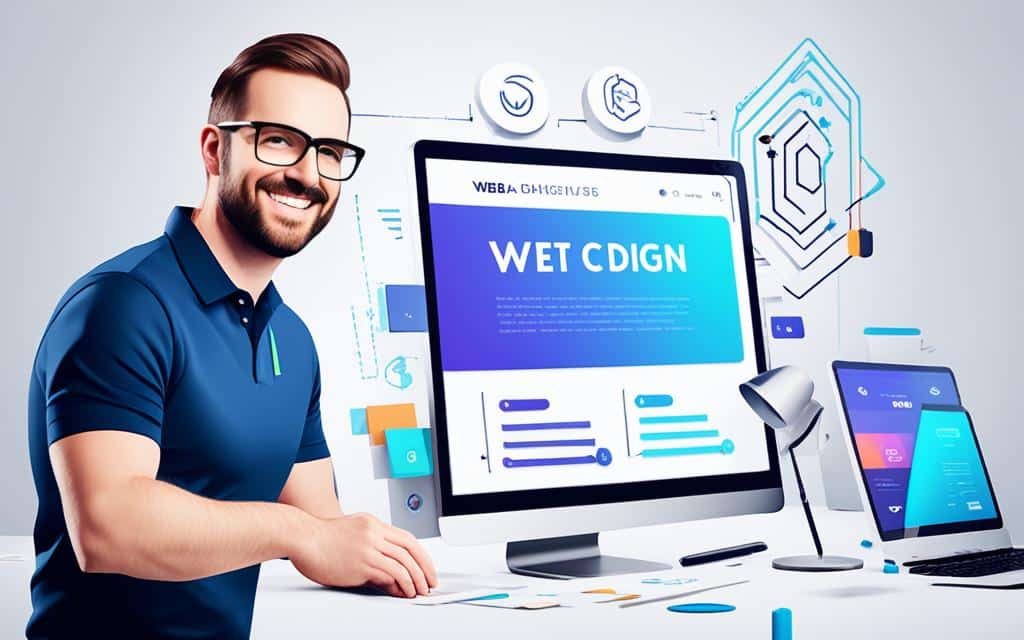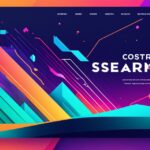Table of Contents
Web animations have become an essential element of modern web design, enhancing user engagement and overall user experience. With the advancement of web technologies, such as the Web Animations API, developers now have more tools and possibilities to create dynamic and interactive web content.
This article will explore the history of website animation, the benefits it brings, and the various techniques and tools available, including the Web Animations API. By understanding the power of web animation and how it can positively impact user engagement and experience, developers can take their designs to the next level and create captivating and immersive web experiences.
The Evolution of Website Animation
In the early days of the web, website animation heavily relied on GIFs, resulting in a somewhat chaotic and unpolished visual experience. The introduction of Flash in the early 2000s revolutionized website animation, allowing for more complex and interactive animations.
Flash offered developers a range of capabilities, including frame-by-frame animation, vector-based graphics, and the ability to incorporate multimedia elements seamlessly. This new era of website animation brought websites to life, captivating users with visually stunning and immersive experiences.
However, with the deprecation of Flash due to security and performance concerns, modern web technologies like HTML5, JavaScript, CSS, and Canvas have taken center stage as the go-to tools for website animation.
| Web Animation Technologies | Benefits |
|---|---|
| HTML5 |
|
| JavaScript |
|
| CSS |
|
| Canvas |
|
These technologies offer better performance, compatibility, and flexibility, enabling developers to create a wide range of animations and interactive experiences that seamlessly integrate into modern web applications.
What about Canvas?
Canvas is an HTML5 element that allows developers to create dynamic, scriptable rendering of graphics and animations. With Canvas, developers can draw graphics, manipulate images, create animations, and implement interactive elements with ease.
The power of Canvas lies in its ability to leverage JavaScript to dynamically update and manipulate the graphics and animations on the canvas. This enables developers to create visually stunning and interactive animations that respond to user interactions in real-time.
Benefits of Website Animation
Website animation offers numerous benefits beyond visual appeal. It helps to capture and prolong user engagement, drawing their attention to key elements on a webpage. Animation can also assist with user navigation by providing visual cues and feedback. Additionally, animations create opportunities to establish an emotional bond with users, making the overall experience more memorable and enjoyable. Altogether, website animation plays a crucial role in enhancing the user experience and creating a seamless and immersive online journey.
Enhancing User Engagement
By incorporating animations into a website, developers have the power to capture and retain user attention. Movement and interactive elements create a sense of dynamism that encourages users to explore and interact with the content. Whether it’s a subtle hover effect or an eye-catching transition, animations add an extra layer of engagement that keeps users invested in the website.
Website animations serve as visual cues that guide users through the navigation process. Animations can indicate the next step or draw attention to important elements, making it easier for users to navigate and understand the website’s structure. Whether it’s a progress bar that shows user progress or a subtle bounce effect over a call-to-action button, animations provide feedback and draw attention to key areas, improving the overall user experience.
Establishing an Emotional Bond
Emotions play a significant role in shaping user experiences. Website animations can evoke emotions, creating a personal connection between the user and the content. From playful animations that bring a sense of joy to users, to subtle transitions that convey elegance and professionalism, animations have the power to create an emotional bond with users. By tapping into users’ emotions, websites can leave a lasting impression and foster a stronger connection with their audience.
The use of animation in website design can have a profound impact on user engagement, attention, navigation, and emotional bond. When implemented thoughtfully, animations enhance the overall user experience, creating a captivating and memorable journey for users.
Different Types of Website Animations
Website animations play a crucial role in enhancing user experience by adding interactive and visually appealing elements. There are several types of website animations that serve specific purposes and contribute to the overall user engagement. Here are some common types of website animations:
1. Hover Animations
Hover animations activate when the cursor hovers over an interactive element. They provide instant feedback and visual cues to users, making the browsing experience more intuitive and engaging.
2. Loading Animations
Loading animations entertain and provide feedback to users during page loading. They help keep users engaged and reduce the perceived waiting time, ensuring a smooth and positive user experience.
3. Scrolling Animations
Scrolling animations add depth and dynamism as users scroll down a page. By introducing animated elements or effects, scrolling animations make the browsing experience more interactive and captivating.
4. Click Animations
Click animations provide instant feedback when users interact with clickable elements. They enhance the overall responsiveness of the website and create a seamless interaction between users and the interface.
5. Background Animations
Background animations add movement and visual interest to the background of a webpage. They can range from subtle effects to more attention-grabbing animations, contributing to the overall aesthetic appeal and engaging users.
Navigation animations improve the fluidity and intuitiveness of website navigation. These animations include transitions, transformations, and visual cues that guide users through different sections or pages, enhancing the overall user experience.
7. Microinteractions
Microinteractions provide subtle feedback for minimal user engagement. These animations can be found in various elements such as buttons, menus, or form fields, contributing to a more pleasant and responsive user interface.
8. Carousel and Slideshow Animations
Carousel and slideshow animations showcase multiple images or content items within a confined space. These animated elements are commonly used in image galleries, product showcases, or portfolios, allowing users to interact and explore the content in an interactive and visually appealing way.
9. Modal and Popup Animations
Modal and popup animations enhance interactivity and add attention-grabbing effects to overlay elements. When triggered, these animations can display additional content, forms, or important messages, creating focal points and capturing users’ attention.
Having a variety of website animations at their disposal, developers can create immersive and engaging web experiences that captivate users. By strategically implementing hover animations, loading animations, scrolling animations, click animations, background animations, navigation animations, microinteractions, carousel and slideshow animations, as well as modal and popup animations, developers can enrich the user experience and make their websites stand out.
Tools and Technologies for Website Animation
Implementing website animations requires the use of various tools and technologies. Let’s explore some of the key ones:
CSS: Cascading Style Sheets (CSS) is a fundamental tool for creating animations on the web. It provides a lightweight and efficient way to add animation effects to web content. CSS animations can be applied to a wide range of elements, allowing developers to bring their designs to life.
JavaScript: JavaScript is a versatile programming language that offers more advanced animation capabilities. By manipulating the Document Object Model (DOM), developers can create dynamic and interactive animations. JavaScript animations are highly customizable and can respond to user interactions in real-time.
SVG Animations: Scalable Vector Graphics (SVG) animations are created using XML-based vector graphics. This technology offers high-quality and scalable animations that can adapt to different screen sizes. SVG animations are well-suited for creating visually appealing and responsive effects.
JSON/Lottie Animations: JSON and Lottie animations provide the ability to create interactive and scalable animations. JSON is a lightweight data-interchange format that can be used to describe animation properties. Lottie, developed by Airbnb, allows designers to export animations from Adobe After Effects in JSON format and render them in web applications.
Each of these tools and technologies has its advantages and limitations. The choice depends on the complexity and requirements of the animation. For simpler animations, CSS may suffice, while more complex interactions may require the use of JavaScript or SVG animations.
Conclusion
The advancements in web animation technologies, such as the Web Animations API, have opened up new possibilities for creating unique and engaging web experiences. With the various tools and techniques discussed in this article, developers can enhance user engagement, improve user experience, and create visually appealing and interactive web content.
Whether using CSS, JavaScript, SVG animations, or JSON/Lottie animations, developers have the flexibility to bring websites to life with transitions and animations that captivate and delight users. Each of these technologies offers different advantages, allowing developers to choose the most suitable approach for their specific requirements.
The Web Animations API stands out for its ability to provide further control and customization, enabling developers to implement sophisticated animations with ease. By leveraging this API, developers can create seamless transitions and captivating animations that enhance the overall user experience.
The future of web animation looks promising, and there is no shortage of ways to leverage these technologies to create memorable online experiences. As web technologies continue to evolve, developers will have even more tools and possibilities at their disposal to push the boundaries of web animation and create immersive and engaging web experiences.
FAQ
What is the Web Animations API?
The Web Animations API is a web technology that provides developers with tools and possibilities to create dynamic and interactive web content.
How has website animation evolved over time?
Website animation has evolved from relying on GIFs to the introduction of Flash and now to modern web technologies like HTML5, JavaScript, CSS, and Canvas.
What are the benefits of website animation?
Website animation enhances user engagement, captures attention, assists with navigation, establishes emotional bonds with users, and improves overall user experience.
What are the different types of website animations?
Some common types of website animations include hover animations, loading animations, scrolling animations, click animations, background animations, navigation animations, microinteractions, carousel and slideshow animations, and modal and popup animations.
What tools and technologies can be used for website animation?
CSS, JavaScript, SVG animations, and JSON/Lottie animations are some of the tools and technologies available for implementing website animations, each with its own advantages and limitations.
How can the Web Animations API be leveraged for website animation?
The Web Animations API offers further control and customization for implementing sophisticated animations, providing developers with the flexibility to create visually appealing and interactive web content.













